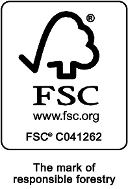 |
| For sales inquiries, please contact us at: sales@eco-gecko.com |
|
1) Composting will reduce the amount of household refuse generated, on average, by 30 - 40%, thereby lowering the cost and the air pollution produced by residual waste transport and disposal. 2) Composting will reduce the production of greenhouse gases, which are released when these organic materials decompose and come into contact with heavy metals and other dangerous compounds in landfills. 3) It’s good for gardening since your composter will produce nutrient-rich soil for you to use in the garden and in the yard. |
||||||
1) If you live in a house, you can start composting in your yard (see the 10 easy steps and links below). 2) If you live in an apartment, you can compost small amounts in a bin on your balcony. There are plastic compost bins with lids that are specially designed for smaller spaces. 3) And no matter where you live in the United States or Canada, you can almost certainly find a compost facility near you that will accept Eco-gecko disposable wooden cutlery, Eco-gecko disposable palm leaf plates and bowls, and all of your food waste and facility-accepted organic material by searching Biocycle’s website database: www.findacomposter.com |
||||||
|
||||||
Here are 10 Easy Steps to Home Composting |
||||||
1) Get a garbage pail or container that you keep on the counter or under the sink. 2) Post the list of compost matter in plain view so that everyone in the home is clear on what is and isn’t compostable material. 3) Purchase a compost bin from your municipality or gardening supplies store, or if possible, make one yourself (see links below). 4) Using a shovel, prepare an area for your composter by turning the soil, preferably in a sunny, well-drained area. 5) Cover the bottom of the area with a 2 to 3-inch layer (5 to 6 cm) of small, dry branches. 6) On these branches, place a layer of dry leaves (the disposable palm leaf plates and bowls can also be used here effectively). This step will allow for air circulation and it will also improve drainage, thus helping to prevent the bottom from getting waterlogged. 7) Place 2 parts of the carbon-rich matter (brown or dry matter, including the disposable wooden cutlery and palm leaf plates) to 1 part of the nitrogen-rich matter (green or wet matter). 8) Add some finished compost from your last composting batch, or add gardening soil on top of your pile to keep the flies out of the compost bin. Some will also do this to add the necessary bacteria, similar to adding starter to a batch of yogurt. 9) You should aerate the compost pile using an aerator or a pitch fork once a week. 10) Check the degree of humidity of your compost pile from time to time. If it is dry, you can add water to the compost until the degree of humidity is similar to that of a wrung-out sponge (not a sponge that would let out water if you wring it out). Be very careful with adding water. A little water can go a long way… it is always easier to add water than to remove it! |
||||||
| As was mentioned in the beginning, composting is good for gardening and the environment. The final product will be rich, dark soil. Take pleasure is using it in your vegetable garden, flower beds, hanging baskets, and on your lawn. And feel good about leaving one less footprint on our beautiful planet! | ||||||
For more information on how to compost, we recommend that you check out the following website: |
||||||
 ECO-GECKO CREATION LLC
ECO-GECKO CREATION LLC